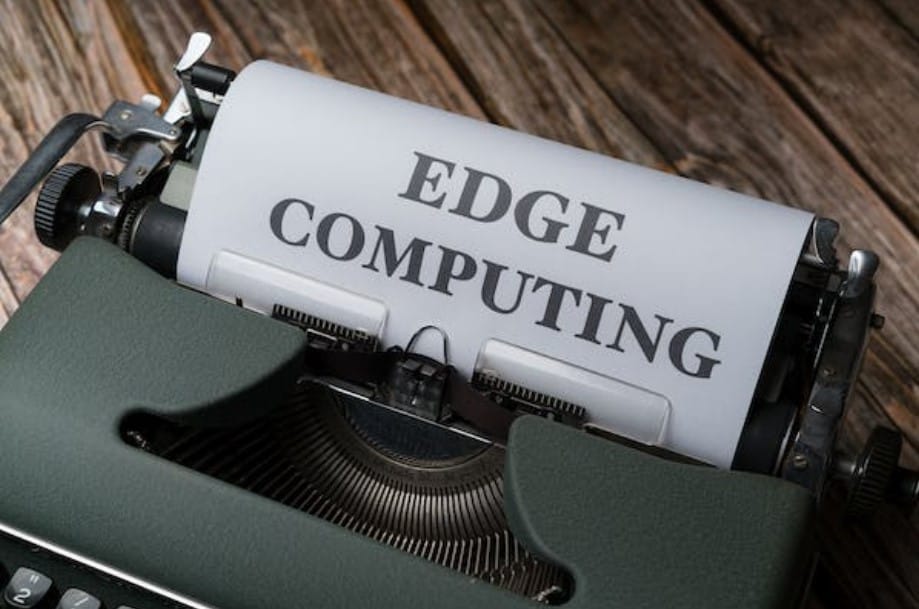Massive volumes of data are generated by IoT devices; these must be processed and evaluated to yield insights and value. Usually, this data is processed by sending it to a centralized cloud or data center, but there are several drawbacks and challenges with this method, including security, reliability, cost, bandwidth, and latency. To efficiently handle these massive data volumes and mitigate bandwidth issues, using business fibre internet can ensure high-speed data transmission to and from the cloud or data centers.
Edge computing is a decentralized computing solution that attempts to solve these issues by moving data storage and processing closer to the data sources—such as local edge servers or IoT devices. Faster data processing, less network congestion, cheaper operating costs, and improved data security and privacy are all made possible by edge computing.

What is Edge Computing in IoT?
Edge computing in IoT is a distributed computing framework that enables data to be processed and analyzed at the network’s edge, close to the source of the data. This allows for real-time decision-making and action while lowering the bandwidth, latency, and cost of data transmission.
Depending on the network edge device and application, edge computing can be implemented in a variety of ways. Certain edge devices possess sufficient processing power and storage to handle data processing and analytics on-site, while others depend on adjacent edge servers or gateways to delegate certain duties. In order to share resources or data, some edge devices may communicate with the cloud or with one another.
Key Advantages of Edge Computing in IoT
For IoT applications, edge computing provides a number of advantages, including:
- Lower latency: Edge computing minimizes the time and distance needed for data transmission by allowing data processing and analysis to take place close to the data source. This increases the IoT applications’ responsiveness and performance, particularly for applications like autonomous driving, video monitoring, and smart manufacturing that call for actions to be taken in real-time.
- Increased Reliability: Edge computing lessens reliance on cloud availability and network connectivity, which can be erratic or unavailable in some harsh or distant environments. Edge computing improves the availability and resilience of Internet of Things systems by enabling autonomous or cooperative operation of IoT devices even in the event of a network or cloud outage.
- Cheaper: Edge computing minimizes the amount of data that must be transferred to the cloud, conserving network resources and bandwidth. Additionally, edge computing minimizes the requirement for cloud computing and storage, which saves operating and maintenance expenses. Furthermore, edge computing can facilitate higher resource and energy efficiency, which can lessen the environmental effect of IoT systems.
- Enhanced security: Since edge computing and IoT processes and stores data locally rather than transmitting it over the internet, it lessens its vulnerability to cyberattacks. Additionally, edge computing can facilitate more detailed and situation-specific privacy and data protection policies, which can aid in adhering to user preferences and data requirements.
IoT at the Edge: How Decentralized Processing Transforms Data Handling
IoT at the edge is a paradigm shift that changes how data is managed in IoT Systems. IoT at the edge takes advantage of the decentralized aspect of edge computing to promote more autonomous and intelligent data handling. Among the many features and capabilities that IoT at the edge can allow are:
- Data aggregation and filtering: Before transferring data to the cloud or other locations, edge computing can gather pertinent or helpful data and filter out redundant or irrelevant data. By doing this, you can lower the volume of data while raising its value and quality.
- Data inference and analytics: Using artificial intelligence, machine learning, or other algorithms, edge computing can carry out data inference and analytics locally to draw conclusions and patterns from data. This may make it possible to make decisions and take action more quickly and accurately.
- Data orchestration and coordination: To maximize the effectiveness, security, and performance of IoT systems, edge computing may orchestrate and manage data resources and flows among edge servers, edge devices, and the cloud. Delivery of services and data management may become more flexible and dynamic as a result.
Successful Implementations of Edge Computing in IoT
Edge computing is providing IoT industry solutions in the following sectors:
- Smart cities: By offering real-time data processing and analysis, greater network reliability and efficiency, and enhanced data security and privacy, edge computing can support smart city applications like traffic control, public safety, environmental monitoring, and waste management.
- Smart healthcare: By offering low-latency data analysis and processing, improved network resilience and availability, and enhanced data protection and compliance, edge computing can support smart healthcare applications like wearable technology, telemedicine, remote patient monitoring, and medical imaging.
- Smart manufacturing: By offering real-time data analysis and processing, enhanced supply chain management, quality control, predictive maintenance, and process optimization, edge computing can support smart manufacturing applications like supply chain management, quality control, and process optimization.
Evolving Trends in Edge Computing for IoT
The rapidly developing field of edge computing is impacted by several market and technological trends, including:
- 5G networks: Known as the next generation of wireless networks, 5G networks provide IoT devices with high-density, low-latency, and fast connectivity. In addition to supporting increasingly complex and demanding IoT applications like augmented reality and holograms, 5G networks can enable edge computing to provide more data and services to more devices and places.
- Artificial intelligence (AI): AI is the area of computer science that seeks to build devices and systems that are capable of learning, reasoning, and making decisions; tasks that often require human intelligence. AI can assist edge computing in handling tasks more autonomously, as well as processing and analyzing more sophisticated and complex data. Offices can easily set up an AI workstation that streamlines workflows by automating repetitive tasks and optimizing data processing. This allows employees to focus on higher-level decision-making while improving overall efficiency.
- Blockchain: This is a distributed ledger system that securely and irrevocably records and verifies data and transactions. Blockchain can facilitate more distributed and decentralized data management and governance, as well as increased trust for data and transactions, through edge computing.

Conclusion
IoT applications can benefit from edge computing in a number of ways, including decreased latency, increased security, reduced cost, and improved reliability. Smart manufacturing, healthcare, and smart cities are just a few of the IoT edge platforms and applications. Many industry and technology developments, including blockchain, 5G networks, and artificial intelligence, have had an effect on edge computing. Since it can revolutionize data processing and analysis as well as the extraction of insights and value from data, edge computing is a major enabler and driver for IoT’s future.